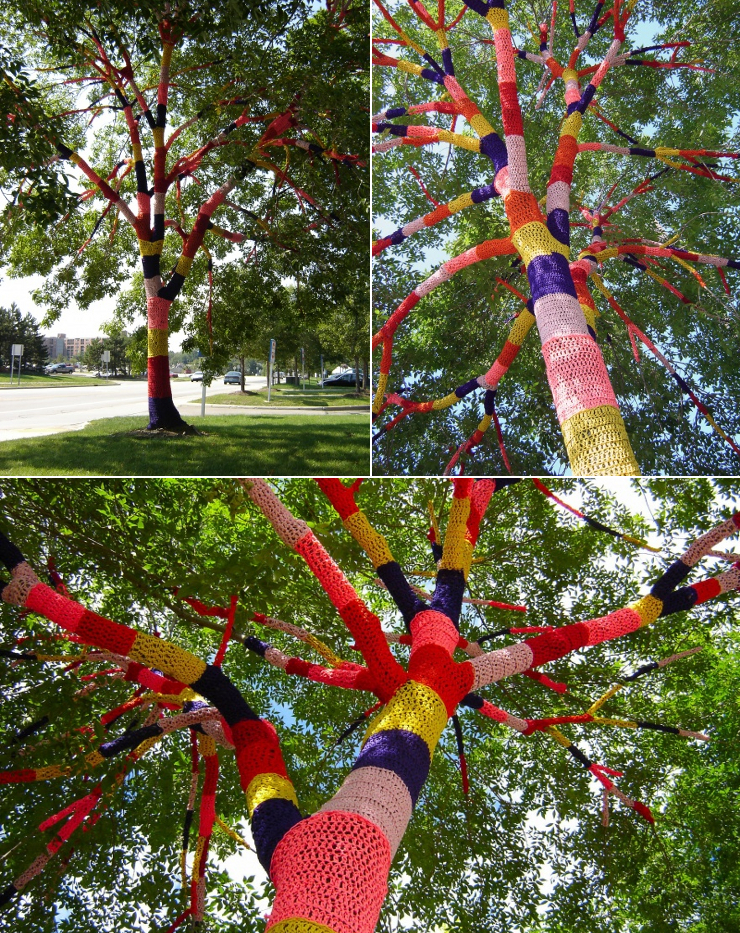


 this awesome image is courtesy Deputy-Dog.com who has compiled an awesome array of yarn bombing images to inspire you!
this awesome image is courtesy Deputy-Dog.com who has compiled an awesome array of yarn bombing images to inspire you!
Fibers 1: Working with thickened dye/ Tuma
SODA SOAK METHOD FOR PROCION
PRINTING/PAINTING
PREPARING SODIUM ALGINATE PASTE
Put 4 cups of tap water in blender, and sprinkle 1 tsp. sodium alginate powder into the water. Blend well. Allow to sit a minute. Sprinkle another tsp. sodium alginate powder into water and blend well. Allow to sit a minute. Repeat this process until 6 tsps. are added to the water. It may be that the blender will not mix the last round, due to thickness of the paste. If this is the case, you can stir it by hand.When thoroughly mixed, pour into plastic bottles and refrigerate. Paste is ready to use in 24 hours. Always store paste in the refrigerator. Over time, the past can break down, so you may have to sprinkle a tiny bit of extra powder into the paste to stiffen it up.
PREPARING PROCHEMICAL PRINT PASTE
If working with Print Paste, all you have to do is add water and mix to the right consistency, thinner for painting, thicker for printing. Store paste in a plastic container with a tight fitting lid. No refrigeration is necessary. It should last several weeks this way. Discard when it begins to have an ammonia smell.